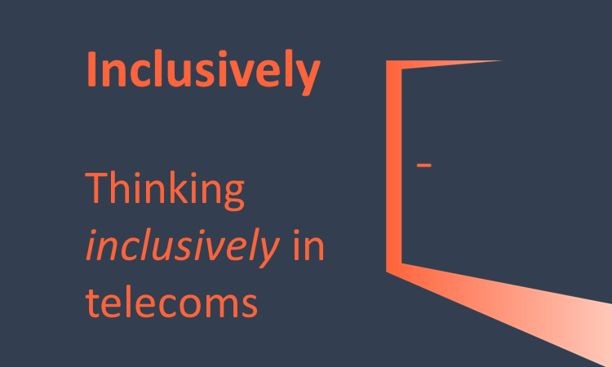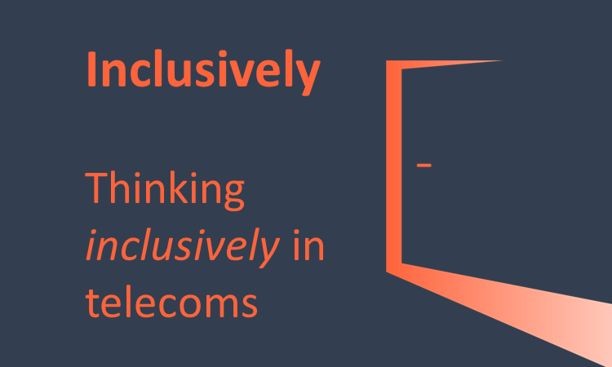
The Inclusively webinar came about through many and varied discussions with @monicapaolini after recognising a major potential shift in how the industry needs to approach designing and implementing its products and services to include everyone beyond the so-called mainstream. The inaugural webinar on October 13th was aimed at getting the issue out there for everyone to discuss, interpret and agree on the best way forward.
So what are we talking about? Well, it started as Corporate Social Responsibility (CSR), has gone through the financial reporting mechanisms of Environmental Social and Governance (ESG) and comes to life in Equality, Diversity and Inclusion (EDI). And, in fact, is part of the broader Sustainability story bringing services to everyone in the economy and bringing benefits to individuals, business and society.
In the past every excluded group had its own set of technologies and services, often delivered through the third sector which resulted in a very fragmented market. Technological help, for people like me with vision impairment, was expensive and a clunky add-on to mainstream technology. What has changed is the advent of common platforms for consuming and interacting: the PC/laptop, smartphones, and smart speakers. And, as virtual reality headsets get reduced to mere glasses, accompanied by other wearables, these too will add to the inclusive experience.
Add to these different disabled groups; people in the ‘Silver Market’, those not yet connected to the Internet (still counted in their billions) and those not educated around the benefits of being connected, and we have a clearer picture of the excluded markets we need to include in future designs.
Think of any content that you create or consume and there will be an inclusive design element. The move to touch screen interfaces on smartphones initially filled me with trepidation, and yet Apple’s Voiceover and Google’s Talkback now deliver excellent interactions for vision impaired people. Haptic feedback and magnification provide additional help and access to signing and captioning brings the hearing impaired into the mix. The smart speaker also provides a whole new stream of activities to new audiences.
Standards exists in the form of W3C and WCAG to build consistently accessible web content. Also, device manufacturers like Apple and Google provide App design guidelines with accessibility included. Extending the understanding of the power of inclusive design to all those creating code, applications and content will bring benefits to literally everyone.
All these technical solutions combine to mimic the different ways in which we communicate. As humans, we have gone from grunting and gestures through the creation of alphabets and writing, to the digital era of computers and are now going out the other end and using gestures, pictures, and even haptic feedback to create human-like interactions. What this means is that we need to take a more holistic view when designing the interfaces, systems, web sites, applications and devices that will be used to bring everyone into the digital marketplace.
In addition, more diverse employment opportunities can be created by having these more inclusively designed systems and processes within our organisations. For example, the many channels open to customers to interact with a telecoms player, could also be supported by people with a very diverse set of skills or impairments for that matter. Furthermore, content can be rendered in the most appropriate format for the individual. For me, video is no longer an option, but audio described soundtracks of films and TV programmes are a real joy.
And, as this all comes together, and everything gets connected and synchronised, we enter the era of the Metaverse. This raises so many questions about inclusion. The myth that everyone and everything is connected on the same level should be dispelled. The gaming world today talks about people potentially participating via fully immersive headsets, video links and even just audio. In effect, this mimics the real world of media today. The important thing is that all channels are interchangeable, and the best possible experience can be delivered through whichever channel is used. This fits in well with our Inclusively philosophy of designing for everyone and every eventuality. Just to be clear, designing for these so-called peripheral cases, also results in a cleaner and simpler interface for those previously considered as the ‘normal target market’.
So, our webinar was a scene setter. The school of Inclusive Design has rarely, if ever, been applied to the telecoms industry. But, as connectivity becomes a critical support element in the broader digital ecosystem and economy, we want to bring all stakeholders to the table to share their perspectives as to how they are building inclusion. By having guests explain their different positions in subsequent episodes of Inclusively, our aim is to educate the industry as to what can be done to build future inclusion, remove barriers to entry for those currently excluded and bring new revenue into the telecoms industry. After all, everyone will pay for their services whether they are joining for just audio, data, video or fully immersive Metaverse experiences.

